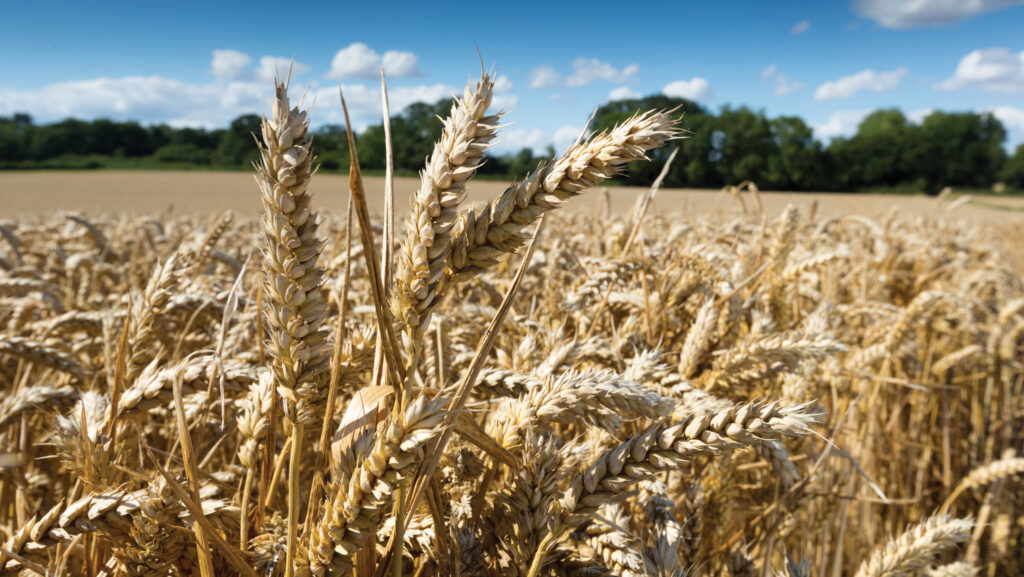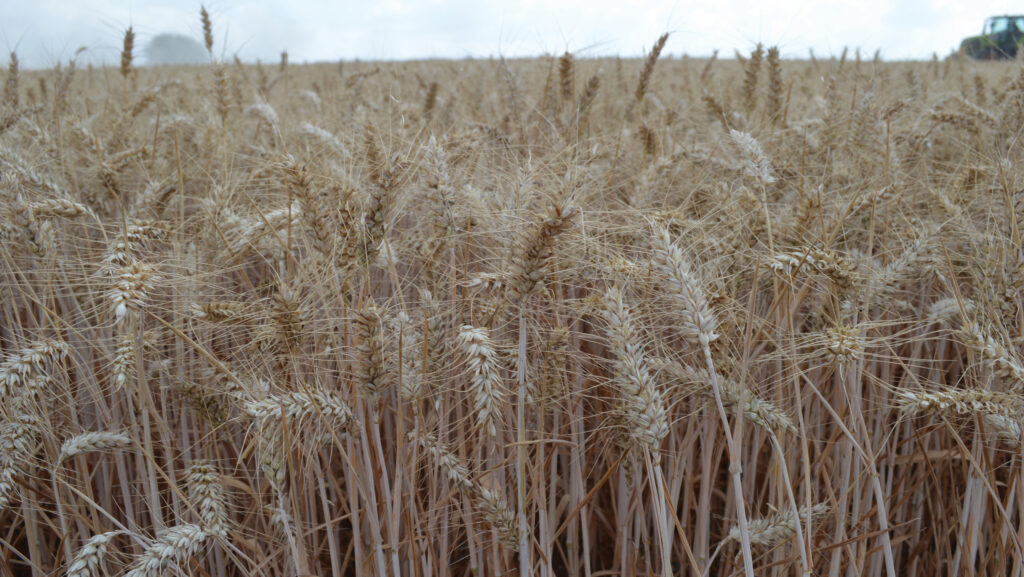Wheat grower plans for bigger milling area
 © Tim Scrivener
© Tim Scrivener Milling wheat grower James Peck says he needs the present £60/t-plus premium for his breadmaking wheat crop to make money and plans for an expanded 1,700ha milling area next season.
The price premium helps cover the extra cost of nitrogen fertiliser and fungicides, the lower yield potential of milling varieties and the risk of missing milling standards across his area of Skyfall and Crusoe.
With a mixed-quality wheat harvest in prospect this summer, grain experts believe the milling premium will stay firm, which is good news for James as he has had to lower his wheat harvest yield forecasts.
See also: Trial reveals cost of unnecessary soil cultivations
“Milling wheats have saved my bacon in recent years because of the premium, so we will be sticking with them for next season,” he tells Farmers Weekly.
James has grown all milling wheats rather than feed varieties since 2013 from his Cambridgeshire base, and for harvest 2024 he is growing 1,363ha destined for the breadmakers.
He saw his average yields peak at 11.22t/ha in 2017 helped by the then new high-yielding variety Skyfall, but yields fell back as he introduced potatoes and sugar beet, which led to later drilling and testing soil conditions.

James Peck © PX Farm
Building yields
Now that these root crops have been discarded, he hopes wheat yields will start to build up from the average 9.99t/ha yield seen at harvest 2023, when his average milling wheat price from that harvest was £265/t.
This means he earned a £76/t premium over feed wheats across the season, with all his wheat meeting milling standards, and some old crop sold for August 2024 went for a £101/t premium.
“If the premium was to go back down to £20/t, we would have to think about going back into Group 4 feed wheats,” he says.
For this season, the budgeted milling wheat yield has been trimmed back to 9.14/ha, meaning there should be slightly less than 12,500t of milling wheat to sell from harvest 2024.
James farms 5,000ha of largely arable land as PX Farms, in an 18-mile radius from his base at Scotland Farm, six miles west of Cambridge, of largely chalky boulder clay with other land in Bedfordshire near Luton and in Lincolnshire near Grantham.
All winter wheats grown are first wheats, with the second cereal often winter barley, with other cereals such as spring barley and winter and spring oats grown along with break crops of mustard, peas and beans and for the last time this year oilseed rape.
Next season, his milling wheat area will rise nearly 25% to 1,700ha largely for rotation reasons, in a rough 50-50 split between milling varieties Skyfall and Crusoe, and he will look for a minimum £60/t price premium to cover the extra growing costs and risks.
“The premiums saved us for harvest 2023 with an average milling premium of £76/t, with no deductions successfully charged against us,” he adds.
Milling premium
Simon Christensen, grain director at agronomy and trading group Frontier, sees the milling premium staying at £60-£70/t into next season due to the prospect of a small wheat crop in the UK, and wheat being priced highly in one the UK’s main importing countries, Germany.
“We don’t see a reset in the premium due to the lack of wheat in the UK and no great increase in Group 1 milling wheats being grown,” he says.
Simon points out the UK wheat crop was under stress from drilling and says there is uncertainty over the actual area in the ground and the likely yield, with general predictions of a 10.5-11.5m tonne UK wheat crop, down from 13.98m tonnes in 2023.
The UK wheat area for harvest 2024 is forecast as the second smallest planted area since 1981, just behind 2020’s crop, at 1.56m ha down 9% from 2023’s 1.72m ha, according to the AHDB’s planting and variety survey in July.
Although this year-on-year fall is not as sharp as the 15% drop estimated in the AHDB’s Early Bird survey in March 2024, the reduced area is putting pressure on the availability of top quality Group 1 breadmaking wheat supplies.
The proportion down to Group 1 milling varieties this season is forecast stable at 24%, and with Group 2 and Group 3 milling and biscuit wheat areas down, the proportion of Group 4 feed wheat rose to 49%, the survey adds.
UK millers traditionally use about 5m tonnes of wheat annually, with normally 80% home-grown and 1m tonnes imported, but the level of imports is set to rise next season due to the likely mixed quality of the UK milling wheat crop.
Nitrogen cost
The big extra cost of growing milling wheat comes from the extra nitrogen fertiliser needed to try to hit the 13% grain protein level demanded by most breadmakers.
James’s late nitrogen application in a liquid form on the ear costs £12-£20/t depending on the price of the liquid fertiliser, with application costs on top of that.
This season, after heavy winter rain there was very little residual nitrogen left in the soil by late winter, and tissue testing in the spring gave protein content forecasts of between 10.7-11.3%, and so two foliar nutrient treatments were used on the wheat ear which pushed late nitrogen costs up to £24/t.
Overall nitrogen use on James’s milling wheats was 250kg/ha with 230kg/ha applied through the spring, before the top-ups on the ear to boost grain nitrogen and hence protein.
In addition, there is the extra cost of fungicides, with Skyfall and Crusoe often needing a T3 ear spray, whereas feed wheats might get away without one.
This season, the farm has been able to control Skyfall’s susceptibility to yellow rust, but in a major brown rust season it has been a struggle controlling brown rust in the very susceptible Crusoe and there may have to be an additional T4 spray on that variety.

© David Jones
The premium also needs to cover the lower yield potential of the milling wheat varieties, as well as higher nitrogen and fungicide costs, with Skyfall’s fungicide-treated yield of 96% and Crusoe’s 95% comparing poorly with top-yielding feed wheat varieties like Beowulf and Champion at 106% on the AHDB Recommended List (RL).
In addition, there is the risk of the wheats not reaching the miller’s general standard of 13% protein, 250 Hagberg and 76kg/hl specific weight, and with the lack of sun this summer and lower residual nitrogen in the soil, specific weights and protein levels could be a problem.
Skyfall and Crusoe have good specific weights of 79.1 and 78.3kg/hl respectively on the RL in which varieties range from 75.2 to 81.1kg/hl, but in a poor year all those values can easily tumble.
Many millers will accept wheat down to 12% protein with a price reduction, but with the farm’s milling wheat budget set at a yield of 9.14t/ha and a price of £265/t, price deductions are not in the budget.
“At the budgeted yield and price we will make a profit, but there is a worry if the yield and price decline they would immediately hit the bottom line,” says James.

